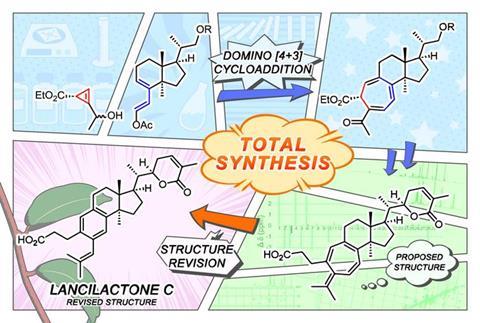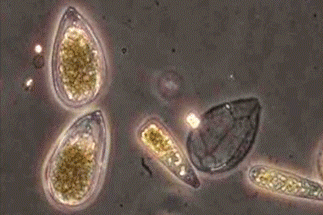Scientists appear to have discovered a way to produce a true structure of the rare but naturally-occurring anti-HIV compound Lancilactone C from start to finish.

Its non-cytotoxicity in mammals could make this triterpenoid an ideal candidate for treating AIDS if its biological activity were clear – and if only it were abundant in nature.
Now, a research group at Kyoto University has succeeded in creating a domino-like synthesis of Lancilactone C’s unique seven-membered ring structure.
Fine-tuning the structure
“Our synthetic method revealed that the proposed structure of Lancilactone C was initially incorrect,” says Chihiro Tsukano of Kyoto University’s Graduate School of Agriculture. “But we successfully derived its true structure from our spectral data and understanding of its biosynthesis.”
In addition to this revelation, Tsukano realized that the electrocyclization – a rearrangement reaction in organic chemistry – used in the total synthesis also occurs in biosynthesis. Ironically, it remains a mystery whether the proposed structure containing an unsaturated seven-membered ring might exist in nature as an analog – or equivalent compound – and how it might affect the expression of biological activity.
Domino-like reaction
Tsukano’s team utilized the domino-like reaction to enable the total synthesis of lancilactones and related triterpenoids. This outcome has inspired the team to further their research in optimizing compound structures, leading to possible development of novel antivirals.
The endless loop of required medication and multi-drug therapies often correlates with a lower quality of life for economically burdened patients.
“Our synthetic method for Lancilactone C, with its known efficacy, may lead to developing less problematic anti-HIV drugs,” concludes Tsukano.







No comments yet